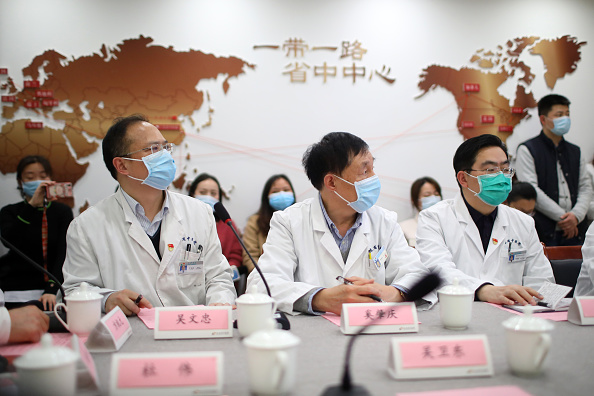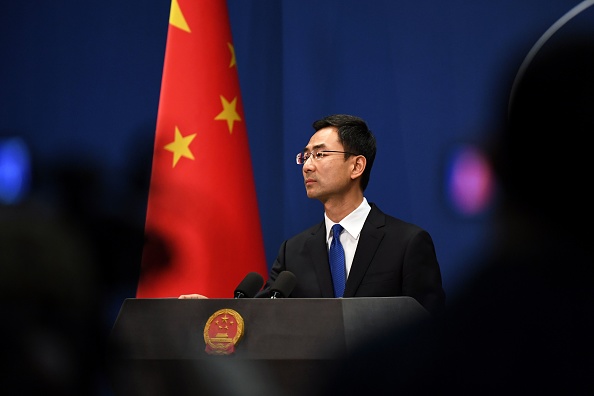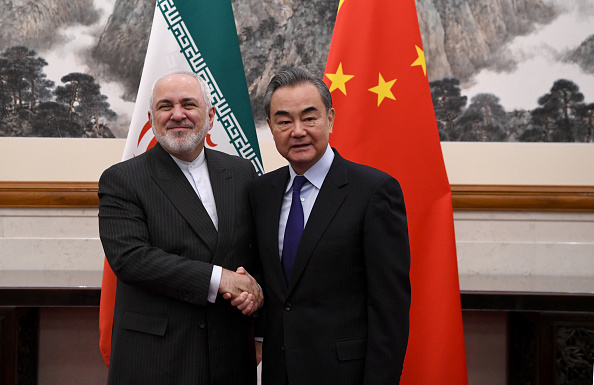
 World in Turmoil
World in TurmoilAs people all over the world adjust to a new way of living with COVID-19, a dire economic forecast, and the prospect of months of turmoil ahead, China has hit a new milestone: no new local cases of the coronavirus. The first cases of the deadly virus were reported in Wuhan, China late last year, and it has since killed 3,245 people in China and spread to all corners of the world, causing widespread lockdowns. Italy has suffered the worst of the pandemic, with a death toll now higher than China's.
China is now hailing its successful halt of transmission, claiming that its strict quarantine and restrictions on personal travel prevented a far worse outcome. Critics, however, claim that early missteps in suppressing news of the outbreak led to the unprecedented global crisis, and that it could have been prevented. Minxin Pei, professor at Claremont-McKenna University, writes more on China's handling of the outbreak in his latest article for China-US Focus. China is also seizing the moment to help other countries battle the pandemic, sending supplies, workers and equipment all over the world, and positioning itself as a humanitarian benefactor for the world.
In a moment of humility, Chinese authorities have apologized to the family of Dr. Li Wenliang, the whistleblower doctor who originally alerted the world to the coronavirus and was silenced. Chinese investigators have also changed tones and praised the doctor's warning, saying it was the right thing to do.
Even in a global meltdown, China and the United States continue to engage in a tit-for-tat, blaming one another for causing the spread of the coronavirus. U.S. Secretary of State Mike Pompeo is strenuously objecting to rumors in China that the U.S. army brought COVID-19 to China; whereas Beijing warned that efforts to smear China's handling of the outbreak won't work. Further fanning the tension are the Trump administration's continued references to COVID-19 as the "Chinese virus" which critics argue is xenophobic and creating unfair stigma against Chinese individuals and Chinese-Americans.
 Newsroom Standoff
Newsroom StandoffSince China opened up to the outside world in 1979, foreign news outlets have played a pivotal role in its communications with the international community. But now journalism is the latest tussle in the bilateral tit-for-tat, as, in a retaliatory strike against the U.S. government, Beijing expelled a significant number of reporters working for the New York Times, Washington Post, and Wall Street Journal.
China's move is in response to the Trump administration's decision to cut the number of Chinese nationals allowed to work for Chinese state media outlets in the U.S. after it labelled five Chinese media outlets as foreign missions last month, deeming them extensions of the government and regulating them in the same way as Chinese missions. China's initial move to expel 3 Wall Street Journal reporters precipitated the first round of journalist expulsions earlier this year.
The move will inevitably restrict the freedom of information flow from China, and make the world increasingly dependent on China's state-controlled sources. China has also said that it can ban journalists from working in Hong Kong, saying the measure falls within the central government's purview over diplomatic affairs.
 Blacklisted
BlacklistedThe United States has blacklisted companies in China and Hong Kong for trading in Iranian petrochemicals, and named Iranian scientists that purportedly engaged in Iran's pre-2004 nuclear weapons program. Washington continues to view Iran as a hostile threat and is sending a message to the world that it will not relent in its quest to isolate Tehran and prevent it from exporting oil. China's Foreign Ministry spokesman Geng Shuang made clear China's position on U.S. sanctions against Iran this Monday, urging the U.S. "to immediately lift such sanctions on Iran, stop getting in the way of Iran's efforts against the epidemic and avoid further harm to Iran's economy and people's livelihood."
Prepared by China-US Focus editorial teams in Hong Kong and New York, this weekly newsletter offers you snap shots of latest trends and developments emerging from China every week, while adding a dose of historical perspective.
- 2020-03-13 Global Emergency
- 2020-03-06 Global Strains
- 2020-02-28 Coronavirus Gone Global
- 2020-02-22 The Virus Continues
- 2020-02-15 Asserting Control
- 2020-02-08 A Novel Outbreak
- 2020-01-31 Global Health Emergency Declared
- 2020-01-24 Celebrations Grounded
- 2020-01-17 Signed, Sealed, Delivered
- 2020-01-10 Ink the Deal
- 2019-12-20 A Level Playing Field
- 2019-12-13 It’s a (Limited) Deal!
- 2019-12-06 An Arbitrary Deadline
- 2019-11-22 On or Off Again?
- 2019-11-15 Counterweight Critique
- 2019-11-08 "I haven't agreed to anything"
- 2019-11-01 Don’t Hold Your Breath
- 2019-10-25 Weaponizing Diplomacy
